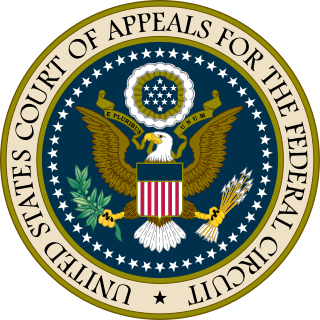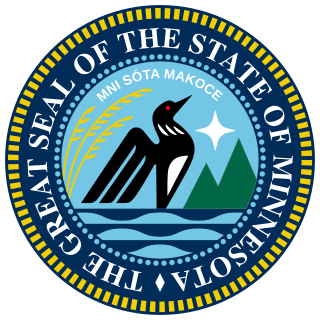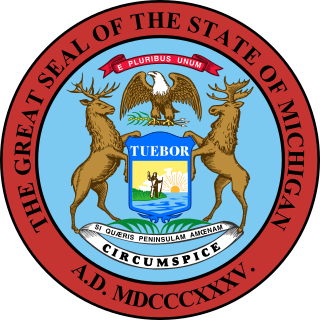This article needs additional citations for verification .(January 2022) |
The Utah Court of Appeals is the intermediate-level appellate court for the state of Utah. It began operations in 1987.
This article needs additional citations for verification .(January 2022) |
The Utah Court of Appeals is the intermediate-level appellate court for the state of Utah. It began operations in 1987.
The court's jurisdiction is complementary to that of the Utah Supreme Court. The Court of Appeals hears all appeals from the Juvenile and District Courts, except those from the small claims department of a District Court. It also determines appeals from District Court involving domestic relations cases, including divorce, annulment, division of property (Utah is an "equitable distribution" state), child custody, child support, visitation, adoption and paternity, and some criminal matters (those that are not first degree felonies or capital cases). The Court also hears appeals from administrative proceedings by state agencies including the Utah Industrial Commission and the Department of Employment Security Career Service Review Board. It also hears cases transferred to it by the Supreme Court.
The panels hear oral arguments in cases during the second, third, and fourth week of the month. After hearing arguments, the judges confer together to discuss the issues raised in the case. One of the judges on the panel is assigned to write the opinion of the court. In addition to its oral argument panels, the court designates three judges to sit on the law and motion panel. This panel determines procedural and substantive motions and hears cases on one day per month.
The court consists of seven judges who serve six-year renewable terms. A presiding judge is elected by majority vote to serve for two years. Court of Appeals sessions usually are conducted in Salt Lake City, but the court travels several times per year, holding court in different geographical regions of the state. The court sits and renders judgment in rotating panels of three judges. It is prohibited by statute from sitting en banc (all seven members at once).
The current judges on the court as of January 2023 [update] are: [1]
| Judges | Appointment | Appointed by | Law school |
|---|---|---|---|
| Michele Christiansen, Presiding Judge | 2010 | Gary Herbert (R) | University of Utah |
| Gregory K. Orme | January 18, 1987 | Norman H. Bangerter (R) | George Washington University |
| David N. Mortensen | July 14, 2016 | Gary Herbert (R) | Brigham Young University |
| Ryan M. Harris | 2017 | Gary Herbert (R) | Stanford University |
| Ryan D. Tenney | August 18, 2021 | Spencer Cox (R) | Brigham Young University |
| John Luthy | October 28, 2022 | Spencer Cox (R) | Brigham Young University |
| Amy Oliver | January 17, 2023 | Spencer Cox (R) | Harvard University |

The United States courts of appeals are the intermediate appellate courts of the United States federal judiciary. They hear appeals of cases from the United States district courts and some U.S. administrative agencies, and their decisions can be appealed to the Supreme Court of the United States. The courts of appeals are divided into 13 "Circuits". Eleven of the circuits are numbered "First" through "Eleventh" and cover geographic areas of the United States and hear appeals from the U.S. district courts within their borders. The District of Columbia Circuit covers only Washington, DC. The Federal Circuit hears appeals from federal courts across the entire United States in cases involving certain specialized areas of law.

The New Hampshire Supreme Court is the supreme court of the U.S. state of New Hampshire and sole appellate court of the state. The Supreme Court is seated in the state capital, Concord. The Court is composed of a Chief Justice and four Associate Justices appointed by the Governor and Executive Council to serve during "good behavior" until retirement or the age of seventy. The senior member of the Court is able to specially assign lower-court judges, as well as retired justices, to fill vacancies on the Court.

The Oregon Supreme Court (OSC) is the highest state court in the U.S. state of Oregon. The only court that may reverse or modify a decision of the Oregon Supreme Court is the Supreme Court of the United States. The OSC holds court at the Oregon Supreme Court Building in Salem, Oregon, near the capitol building on State Street. The building was finished in 1914 and also houses the state's law library, while the courtroom is also used by the Oregon Court of Appeals.

The Supreme Court of California is the highest and final court of appeals in the courts of the U.S. state of California. It is headquartered in San Francisco at the Earl Warren Building, but it regularly holds sessions in Los Angeles and Sacramento. Its decisions are binding on all other California state courts. Since 1850, the court has issued many influential decisions in a variety of areas including torts, property, civil and constitutional rights, and criminal law.

The Supreme Court of Maryland is the highest court of the U.S. state of Maryland. The court, which is composed of one chief justice and six associate justices, meets in the Robert C. Murphy Courts of Appeal Building in the state capital, Annapolis. The term of the Court begins the second Monday of September. The Court is unique among American courts in that the justices wear red robes.

The United States Court of Appeals for the Federal Circuit is one of the 13 United States courts of appeals. It has special appellate jurisdiction over certain categories of specialized cases in the U.S. federal court system. Specifically, it has exclusive appellate jurisdiction over all U.S. federal cases involving patents, trademark registrations, government contracts, veterans' benefits, public safety officers' benefits, federal employees' benefits, and various other types of cases. The Federal Circuit has no jurisdiction over criminal, bankruptcy, immigration, or U.S. state law cases. It is headquartered at the Howard T. Markey National Courts Building in Washington, DC.

The Supreme Court of Virginia is the highest court in the Commonwealth of Virginia. It primarily hears direct appeals in civil cases from the trial-level city and county circuit courts, as well as the criminal law, family law and administrative law cases that are initially appealed to the Court of Appeals of Virginia. Established in 1779 as the Supreme Court of Appeals, the Supreme Court of Virginia is one of the oldest continuously active judicial bodies in the United States.

The Alaska Supreme Court is the state supreme court for the U.S. state of Alaska. Its decisions are binding on all other Alaska state courts, and the only court its decisions may be appealed to is the Supreme Court of the United States. The Alaska Supreme Court hears appeals from lower state courts and also administers the state's judicial system.
The Kentucky Court of Appeals is the lower of Kentucky's two appellate courts, under the Kentucky Supreme Court. Prior to a 1975 amendment to the Kentucky Constitution the Kentucky Court of Appeals was the only appellate court in Kentucky.

Maura Denise Corrigan is the former director of the Michigan Department of Human Services. She was also a justice of the Michigan Supreme Court, serving from 1998 to 2011 and as chief justice from 2001 to 2004.

The Superior Court of Pennsylvania is one of two Pennsylvania intermediate appellate courts. It is based in Harrisburg.

The judicial system of Israel consists of secular courts and religious courts. The law courts constitute a separate and independent unit of Israel's Ministry of Justice. The system is headed by the President of the Supreme Court and the Minister of Justice.

The Supreme Court of the United States is the highest court in the federal judiciary of the United States. The procedures of the Court are governed by the U.S. Constitution, various federal statutes, and its own internal rules. Since 1869, the Court has consisted of one chief justice and eight associate justices. Justices are nominated by the president, and with the advice and consent (confirmation) of the U.S. Senate, appointed to the Court by the president. Once appointed, justices have lifetime tenure unless they resign, retire, or are removed from office.

The Montana Supreme Court is the highest court of the state court system in the U.S. state of Montana. It is established and its powers defined by Article VII of the 1972 Montana Constitution. It is primarily an appellate court which reviews civil and criminal decisions of Montana's trial courts of general jurisdiction and certain specialized legislative courts, only having original jurisdiction in a limited number of actions. The court's Chief Justice and six Associate Justices are elected by non-partisan, popular elections. The Montana Supreme Court meets in the Joseph P. Mazurek Building in Helena, Montana, the state's capital, an international style building completed in 1982 and named in the honor of former Montana Attorney General, Joseph P. Mazurek.

The New Mexico Supreme Court is the highest court in the U.S. state of New Mexico. It is established and its powers defined by Article VI of the New Mexico Constitution. It is primarily an appellate court which reviews civil and criminal decisions of New Mexico's trial courts of general jurisdiction and certain specialized legislative courts, only having original jurisdiction in a limited number of actions. It currently resides in the New Mexico Supreme Court Building in Santa Fe.

The Minnesota Court of Appeals is the intermediate appellate court in the U.S. state of Minnesota. It began operating on November 1, 1983.

Courts of Michigan include:
A judicial panel is a set of judges who sit together to hear a cause of action, most frequently an appeal from a ruling of a trial court judge. Panels are used in contrast to single-judge appeals, and en banc hearings, which involves all of the judges of that court. Most national supreme courts sit as panels. In addition, in many countries of the civil law tradition, trial courts are also constituted as judicial panels.
The Judiciary of California or the Judicial Branch of California is defined under the California Constitution as holding the judicial power of the state of California which is vested in the Supreme Court, the Courts of Appeal and the Superior Courts. The judiciary has a hierarchical structure with the California Supreme Court at the top, California Courts of Appeal as the primary appellate courts, and the California Superior Courts as the primary trial courts.
The Judiciary of Virginia is defined under the Constitution and law of Virginia and is composed of the Supreme Court of Virginia and subordinate courts, including the Court of Appeals, the Circuit Courts, and the General District Courts. Its administration is headed by the Chief Justice of the Supreme Court, the Judicial Council, the Committee on District Courts, the Judicial Conferences, the Judicial Inquiry and Review Commission, and various other offices and officers.